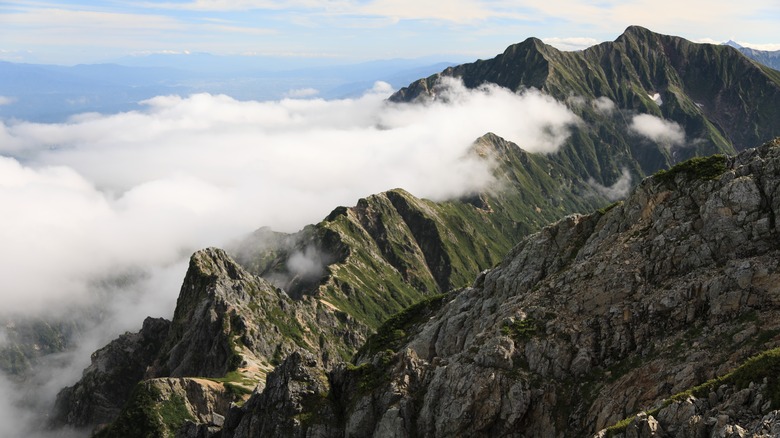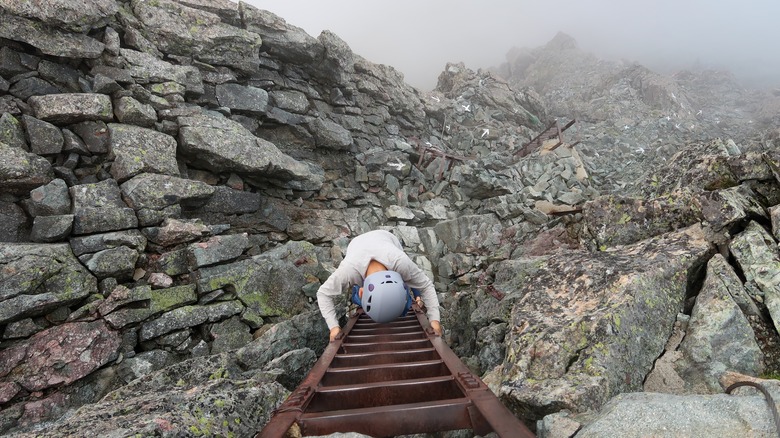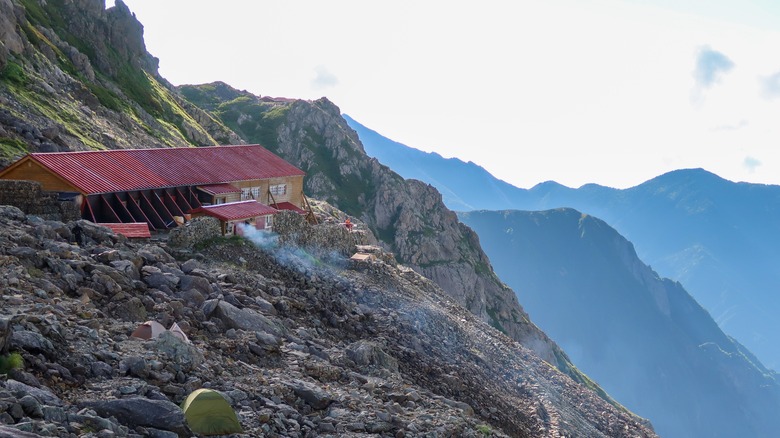This Thrilling Hike In Japan Is Not For Amateurs
If you're an extreme hiker, you probably have popular hiking trails like The Inca Trail or El Caminito del Ray already on your bucket list. To add to your list, you definitely need to include the Daikiretto Traverse on your lineup of must-dos. The Daikiretto Traverse is one of the most beautiful and dangerous hiking trails in the world. The route is found in the Japan Alps, also known as "The Roof of Japan." This 180-mile-long mountain range stretches from the north to south in central Japan. The Daikiretto is situated in the Northern Alps,or the Hida Sanmyaku in Jappanese.
This dangerous ridgeline is situated between the breathtaking mountain tops Yarigatake and Okuhotaka-dake. Most often encountered on the multi-day Kamikochi, Yarigatake, and Mt. Hotaka circuit, the Daikiretto Traverse itself only stretches across about 2 miles. However, due to its difficulty and fatally dangerous drops, just 2 miles will be enough to exhaust and exhilarate even the most advanced hikers.
Hiking the Daikiretto Traverse
If you're a beginner hiker, you do not want to attempt the Daikiretto Traverse. Doing so as an amateur could very well be deadly. Situated in the Hotaka circuit, this precipitous rocky stretch showcases a dramatic terrain. On either side of the narrow trail are jaw-dropping cliffs overlooking plummets of approximately 300 meters. While trekking across this advanced trail, hikers are required to climb portions of the journey. Most climbing sections are guided by safety chains. Although, others involve bare terrain.
In addition, hikers will need to scale ladders established along the route. But don't worry, these ladders are safely bolted to the landscape. If you are a seasoned hiker and you can handle some adrenaline-pumping heights, this could be the trail for you. Your stomach may drop in fear, but you'll get unparalleled views overlooking the vast Japanese mountain ranges. In order to really take this in and enjoy your time, however, you'll need to be properly prepared.
How to prepare for the Daikiretto Traverse
Hiking the Daikiretto Traverse cannot be a willy-nilly decision. To be successful, this hike takes serious forethought. When planning your trip to the Northern Japanese Alps, you'll need to consider the time of year, what gear to bring, and where you will stay in order to access the traverse. The official season designated for climbing in the Northern Japanese Alps is considered late May through September. This is also the most popular time of year, given that conditions are optimal for hiking. As a result, the majority of huts offering accommodations and meals are open for these months, with some of the larger huts staying open a bit longer.
If you are an expert hiker prepared for extreme challenges, you may consider attempting the traverse in the winter. However, do not take this decision lightly, as it is highly dangerous. For hikers doing their journey at the start and end of the climbing season, you'll want to bring warm layers, as the weather is on the chillier side.
Whatever time of year you go, you will benefit from packing gripping gloves to ensure your stability and a hard helmet to shield you from loose rocks. Additionally, you'll want to bring Japanese Yen for your meals and lodging. Lastly, but perhaps most importantly, bring a paper map, as you will have no cell service once en route.


